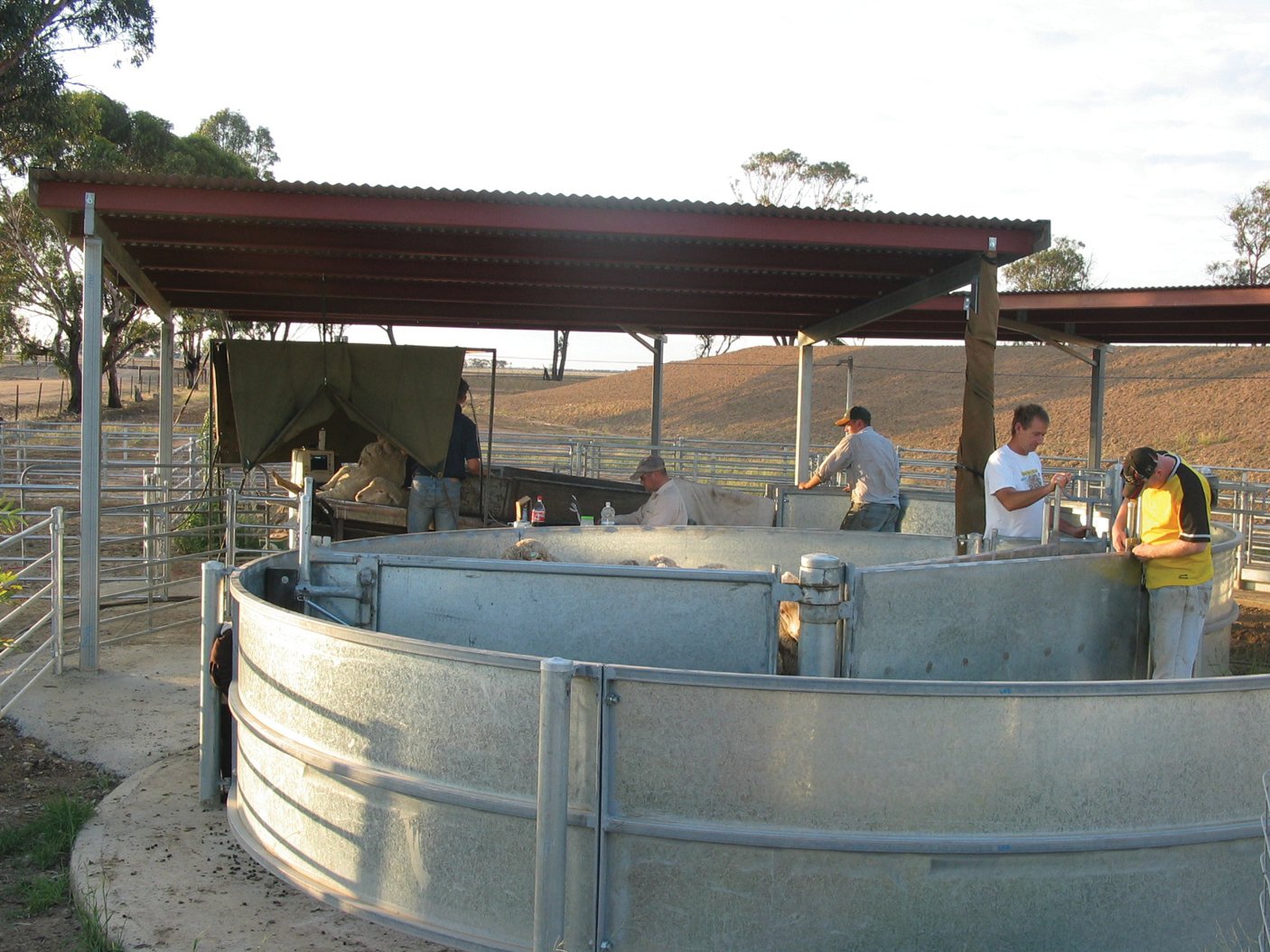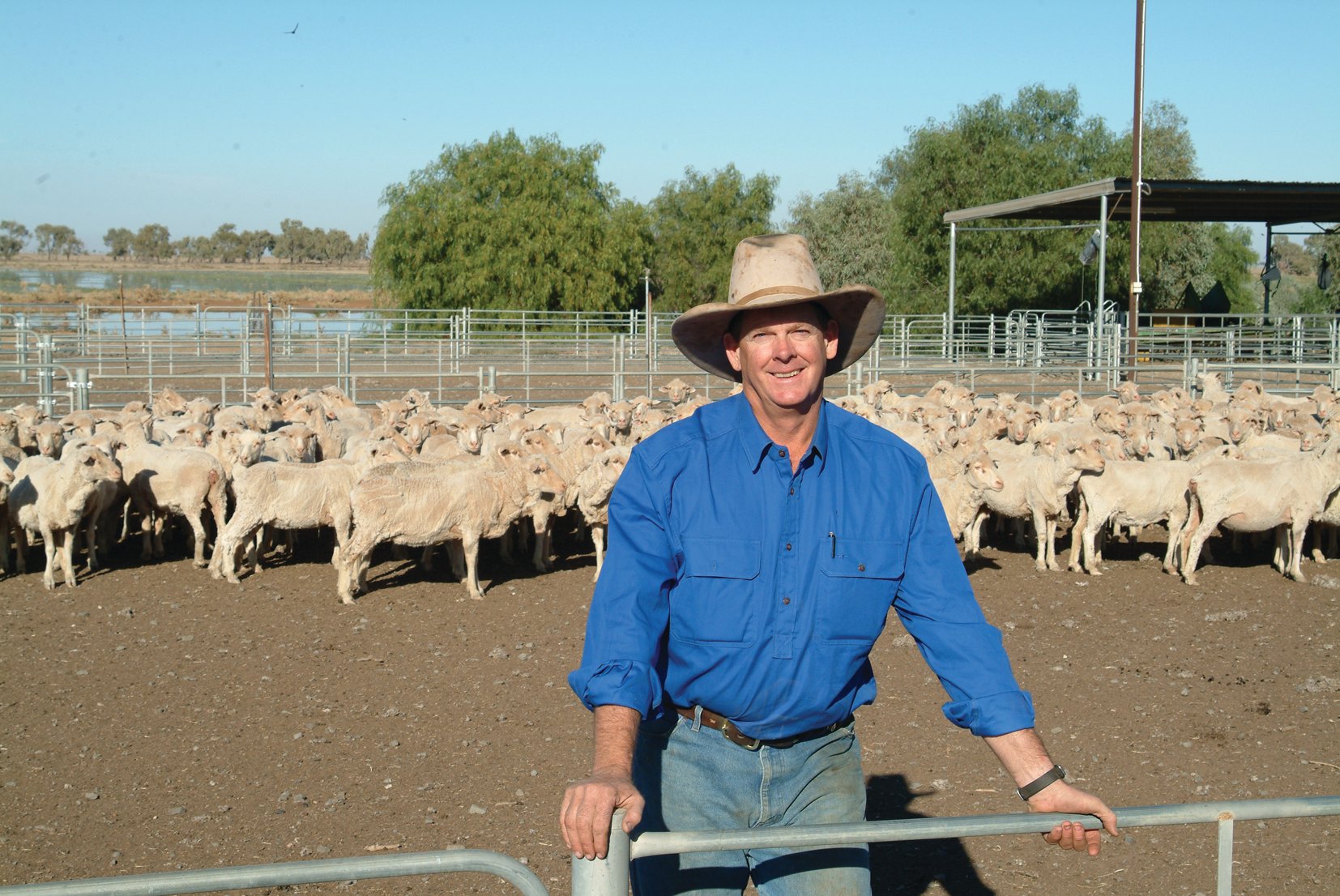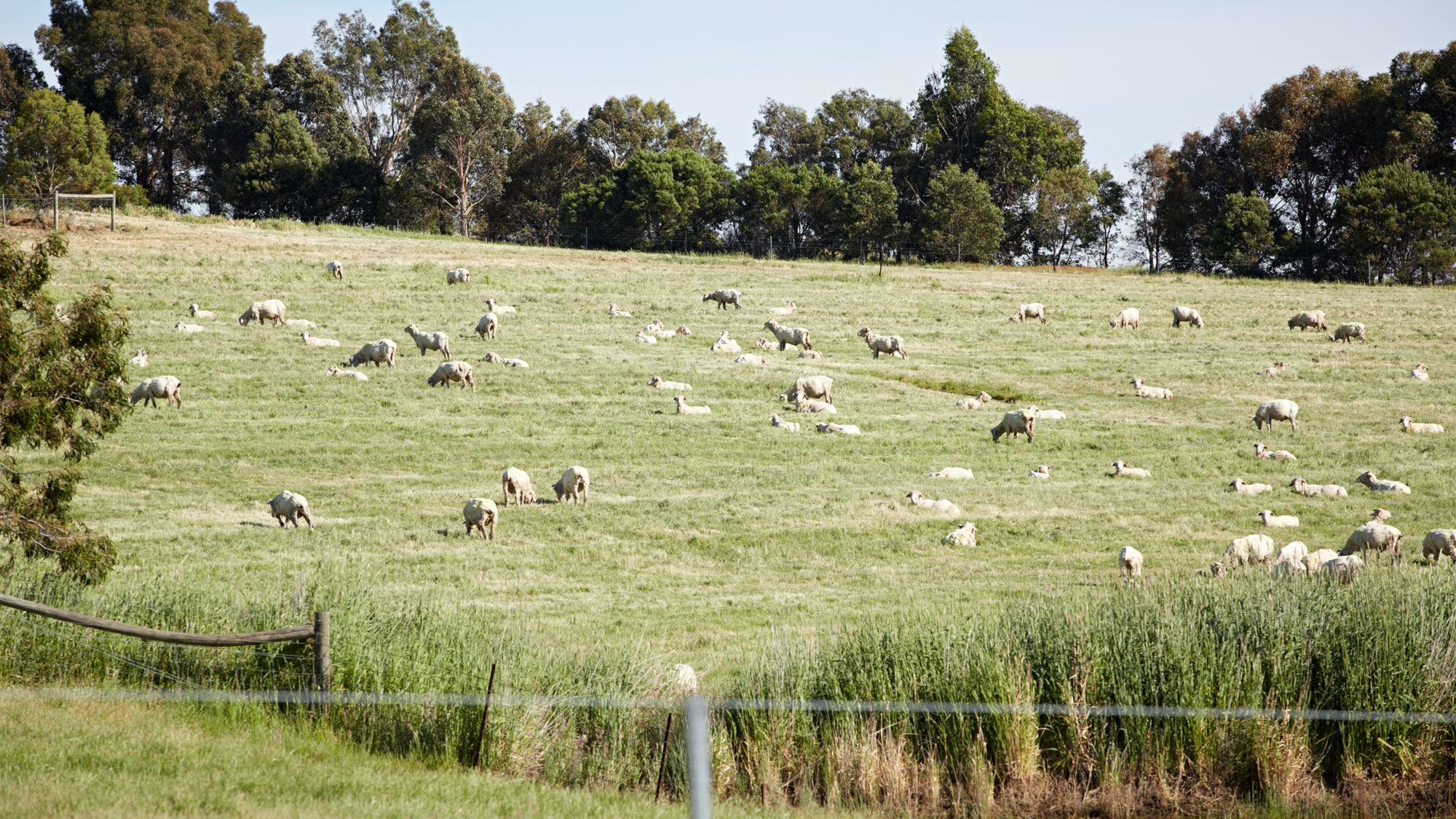Chapter 11.5 Meet animal wellbeing requirements
Background information
Animal welfare management is part of total farm management. Start by reviewing all factors that affect sheep wellbeing. Tool 11.18 provides a checklist of welfare procedures to assess farm compliance.
At a glance
- Monitor sheep condition scores (CS) to achieve production targets while ensuring physical welfare.
- Apply management practices and techniques to prevent diseases.
- Use appropriate and efficient stock handling methods and well-designed facilities that complement natural sheep behaviour.
- Audit all factors that could affect sheep welfare.
Meet nutrition targets for all sheep classes as measured by condition score
Ensure stock maintain recommended CS targets (see tool 11.2). These guidelines meet production targets. See chapter 8.2 from MMFS Module 8 Turn Pasture into Product for more information.
Freedom from important diseases
Basic animal welfare standards include freedom from disease. All diseases need prompt diagnosis and treatment. As a guide, aim for mortality rates of below 4% for adults and below 5% for lambs (from lamb marking to 1 year old). Major diseases, including footrot, flystrike, internal parasites and JD, can be well controlled with an integrated approach to management.
Follow national and state codes of practice
Currently each state has codes of practice for on-farm husbandry procedures and transport (including curfew times, pre-transport preparation, animals fit for transport, minimising stress, segregation and stocking densities and loading and truck facilities).
The signposts section lists the codes of practice relevant to sheep enterprises.
Husbandry procedures
While routine husbandry procedures are conducted on all stock, some important aspects need to be considered:
- Plan husbandry procedures to minimise handling in order to reduce livestock stress. Where possible, combine procedures so sheep are handled for short periods, less frequently.
- Where a surgical husbandry procedure is considered necessary, it should be carried out at the earliest age possible by a competent operator using clean equipment and in a manner that minimises pain. Using anaesthetics and analgesics is strongly recommended in all jurisdictions and required by law in some for specific procedures. See the signposts section for specific information on these procedures.
- Skilled handling of stock is very important, either by on-farm labour or experienced contractors to provide a level of technical competence to ensure appropriate welfare standards are met.
- Information on best practice techniques for a range of sheep husbandry practices can be found in signposts.
Manage ewes to improve lamb survival
While some neonatal lamb losses are inevitable, they can be significantly reduced by good management. Considerations include differential nutritional management of single- and twin-bearing ewes; a well-designed, targeted animal health program; reduced lambing mob sizes; planning and preparation of lambing paddocks with a focus on pasture availability; providing shelter; paddock topography; and control of predators during lambing.
Assessing ewes 4-6 weeks post weaning for their fitness to join next year is another important link to improving ewe and lamb survival. Complete a Fit to join ewe health assessment on all ewes (see signposts), including checking for lameness, sound udders, condition score and teeth.
See chapter 10.3 in MMFS Module 10 Wean More Lambs for more information regarding managing your breeding ewes.

Management of sheep after shearing
Shearing is stressful for sheep so effective management is critical. Sheep are most at risk for the first 2 weeks after shearing, but losses can occur for up to 4 weeks in cold, wet and windy weather. Sheep less than 2 years old and those in poor condition are especially at risk.
Closely observe weather forecasts during and after shearing and muster off-shears sheep into sheltered paddocks in periods of severe weather. Sheds provide the best shelter. Dense bush is next, followed by well-designed plantations in sheltered paddocks.
The energy requirements of recently shorn sheep can increase for around 6 weeks after shearing, so provision of adequate feed is critical during this period. As well, sheep that have been heavily grain fed, such as young lambs or pregnant ewes, are at risk of metabolic problems like hypocalcaemia (when the body fails to mobilise enough calcium from the bones to maintain normal blood calcium levels). Vulnerable sheep should not be deprived of feed longer than necessary. Feed good quality hay, supplement calcium/limestone or use a calcium drench to minimise metabolic problems when feeding grain.
Managing sheep in drought
Implement a disaster management plan when sheep come under increased stress from naturally occurring events.
Getting through a run of poor seasons requires patience, resilience, and a significant amount of planning.
Having a sound plan in place with well-defined trigger points will assist in guiding your thinking, but it is important all members of the business are aware of the plan so they can work towards achieving the business’ targets and making assessments so you know when you’ve reached a trigger point.
Some of the strategies to be considered during drought are:
- Whether to feed or sell
- The cost of feeding (including feed and labour costs)
- Feeding options (e.g., containment, self feeders, dumps in the paddock)
- Which sheep to sell
- When to sell
- Water volume and security.
By setting your own key dates and trigger points, where you assess the current conditions, seasonal outlook and other factors (including commodity marketing options and price forecasts, risk, resources available to the business, etc.), you can strategically work through the issues in a way that allows you to be in control.
Revisiting and adjusting your trigger points is an important part of the process – keep reviewing your plans and updating them, but don’t put off the inevitable. Early decisions are often the ones made with the least amount of emotion as they are not forced decisions.
Sheep handling system
Keep sheep handling to the minimum level necessary to avoid unnecessary distress. Design handling facilities (shearing sheds, yards, laneways and sheep handlers) to minimise the risk of injury to sheep and humans and complement natural sheep behaviour. Some important features include:
- Design yards to ensure a smooth flow of stock, with long, narrow forcing races (1.5 m) so sheep move in one direction.
- Bugle-type designs work well as they give sheep the sense of an escape route, operators have access to sheep that baulk and sheep do not see the operator as they enter the draft.
- Sheep generally move better on flat ground or an incline.
- Ramps should have a slope of less than 1:3.
- Avoid shadows in yards which can cause sheep to baulk.
- Front of raceways should be open so sheep do not see a dead end.
- Sheep tend to move better and remain calmer if they see other animals within touching distance.
- Use materials that do not make a noise and are designed to avoid potential injury to sheep.
- Maintain sheep handling facilities in good working order and complete repairs well before major husbandry practices are carried out.
- Provide non-slip flooring.
Stockmanship and education
Stockmanship is a broad term that encompasses the expertise of people involved in handling stock. Sheep handling methods are very important for ease of movement, increasing productivity and reducing OH&S issues.
Understanding sheep behaviour is an important part of good stockmanship and improves a handler’s ability to move stock whilst minimising stress. Key characteristics of sheep behaviour include:
- Sheep are herd animals – they exhibit flocking behaviour and like to follow each other.
- A separated sheep will always attempt to return to the mob.
- Breeds behave differently - Merinos prefer to flock as a single group, Southdowns form a few subgroups and Dorset sheep always form subgroups.
- In a flock situation there is little dominance but in competitive feeding situations hierarchies occur.
- Sheep tend to graze up-wind in warm weather and down-wind in cold weather. This is important to consider when designing shelter belts, and especially for the management of freshly shorn sheep.
- Avoid sudden jerking movements and loud noise. Apply optimal pressure rather than excessive pressure to exploit the sheep’s flight zone. If a sheep moves away, the handler has penetrated the flight zone. If the animal is looking at the handler, the handler is outside the flight zone.
- Sheep like to see what is pressuring them. When pressured too much they will try to cut back. Attempt to move the lead animals by positioning yourself in the flight zone, rather than forcing from behind.
- Use dogs carefully. Muzzle dogs that bite and tie them up when they are not working.
Selection for temperament may improve animal behaviour and stock handling.
SIGNPOSTS
READ
The Australian Animal Welfare Standards and Guidelines for Sheep were agreed by State and Territory Governments in 2016 and are being regulated into law by most State and Territory governments. This resource includes The Australian Animal Welfare Standards and Guidelines for Sheep along with a list of the states which have implemented them.
This Model Code of Practice is intended as a guide to all stock handlers involved in the management of animals of various species at saleyards.
This resource includes the new Australian Animal Welfare Standards and Guidelines — Land Transport of Livestock along with a list of states and territories who have implemented them.
A range of information covering everything from the loading ramp to yard design and shearing sheds.
Preparing your flock properly will help ensure a successful harvesting of your sheep’s wool. AWI has prepared some advice for woolgrowers to consider prior to shearing.
The design of sheep yards affects the efficiency of sheep work as well as the health and wellbeing of both people and sheep.
A range of information covering everything from the loading ramp to yard design and shearing sheds.
Maintaining healthy and productive sheep is vital for Australian growers. Keep up to date with the latest developments in animal health, investment in new technologies and information and best practice management.
A practical guide to assist woolgrowers recover from drought, covers pasture utilisation through flock fertility and weaner management to genetics; all important components of flock recovery strategies.
Each of the state governments is responsible for setting the animal welfare standards (minimum acceptable practices that must be complied with) and guidelines (accepted good industry practice that should be complied with) and ensuring the policy and legislative frameworks and compliance in each state support good animal welfare outcomes.
Each of the state governments is responsible for setting the animal welfare standards (minimum acceptable practices that must be complied with) and guidelines (accepted good industry practice that should be complied with) and ensuring the policy and legislative frameworks and compliance in each state support good animal welfare outcomes.
Each of the state governments is responsible for setting the animal welfare standards (minimum acceptable practices that must be complied with) and guidelines (accepted good industry practice that should be complied with) and ensuring the policy and legislative frameworks and compliance in each state support good animal welfare outcomes.
Each of the state governments is responsible for setting the animal welfare standards (minimum acceptable practices that must be complied with) and guidelines (accepted good industry practice that should be complied with) and ensuring the policy and legislative frameworks and compliance in each state support good animal welfare outcomes.
Each of the state governments is responsible for setting the animal welfare standards (minimum acceptable practices that must be complied with) and guidelines (accepted good industry practice that should be complied with) and ensuring the policy and legislative frameworks and compliance in each state support good animal welfare outcomes.
Each of the state governments is responsible for setting the animal welfare standards (minimum acceptable practices that must be complied with) and guidelines (accepted good industry practice that should be complied with) and ensuring the policy and legislative frameworks and compliance in each state support good animal welfare outcomes.
USE
Allows users to search by species, disease or syndrome to instantly access veterinary advice,
Allows users to search by species, disease or syndrome to instantly access veterinary advice. Can be accessed online or is available as an app for both iOS and Android.
Allows users to search by species, disease or syndrome to instantly access veterinary advice. Can be accessed online or is available as an app for both iOS and Android.
Assists sheep producers to proactively manage the nutrition of their ewe flock through the reproduction cycle utilising condition scoring feed on offer (FOO) assessments.
Assists sheep producers to proactively manage the nutrition of their ewe flock through the reproduction cycle utilising condition scoring feed on offer (FOO) assessments.
Develop a drought feeding strategy for sheep or cattle by determining feed requirements for different sheep age groups and pregnancy or lactation status.
Develop a drought feeding strategy for sheep or cattle by determining feed requirements for different sheep age groups and pregnancy or lactation status.
View feed budget tables based on feed on offer (FOO) for annual clover-based pastures and mixed perennial and annual pastures.
ATTEND
The provision of pain relief with routine husbandry practices is now an expectation, and producers need to consider the use of pain relief products in their animals, but also alternate husbandry procedures and management practices. This module outlines available products, their costs and when they are suitable to use, as well as best practice recommendations for specific husbandry practices, and considerations for alternatives to some current husbandry practices.
Vaccines are an important part of a flock health plan. When used correctly as part of a property health plan, vaccines can help prevent common livestock diseases, leading to improved animal health, welfare and productivity. Producers should be aware of the diseases in their region that can be prevented by vaccination and assess the risk based on previous local district and property history. This module outlines the different types of vaccines, how to store and handle vaccines, why you should consider vaccinating, common sheep diseases and the vaccines currently available for sheep in Australia.
Emphasise mutually beneficial outcomes for stock and handlers regardless of yard design. Many organisations provide this training around Australia, so speak with a provider in your region to complete training.







